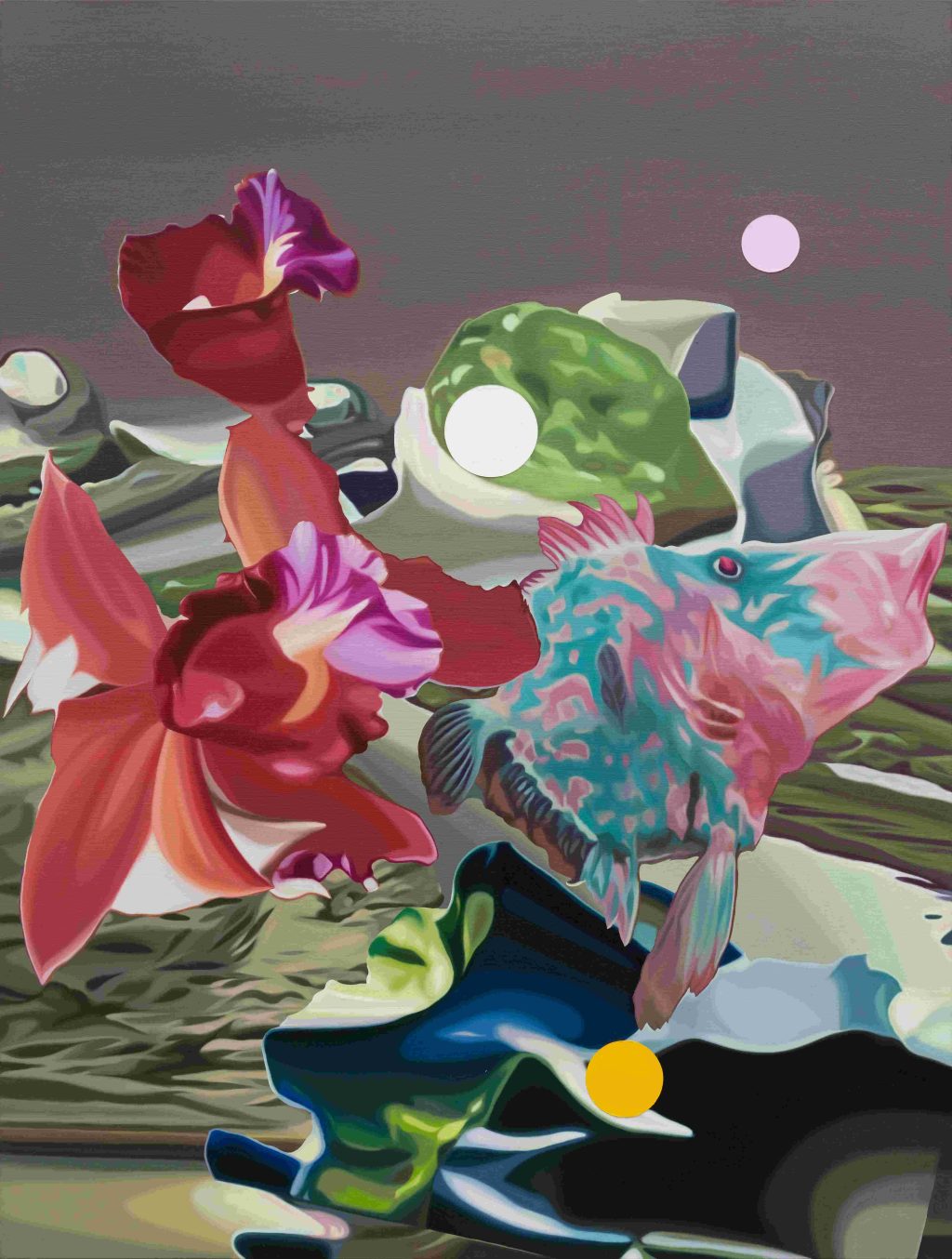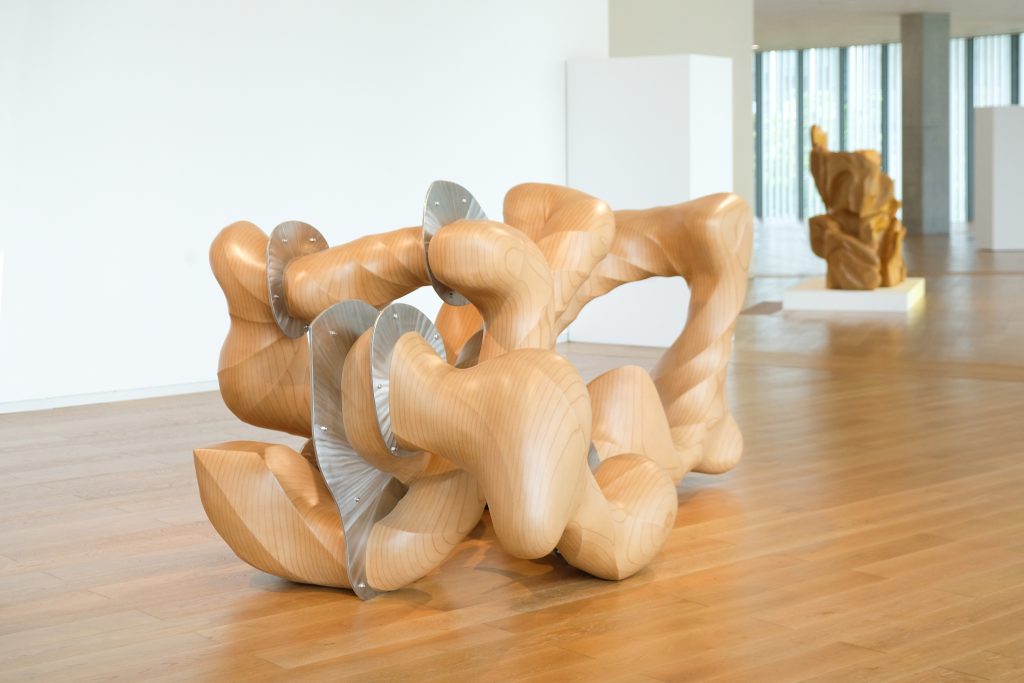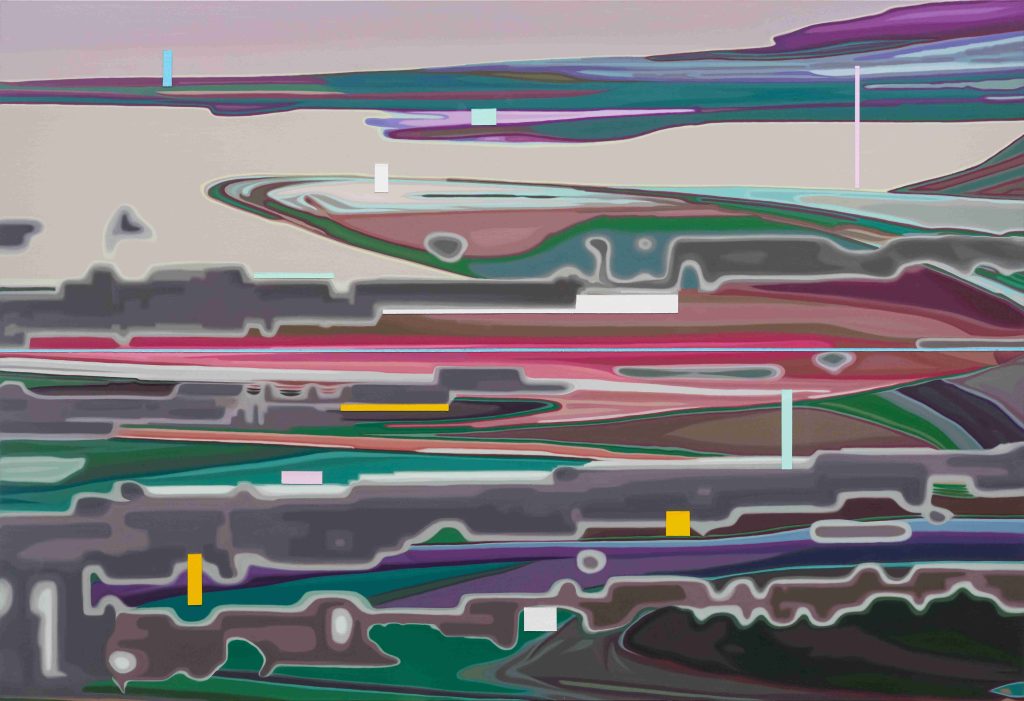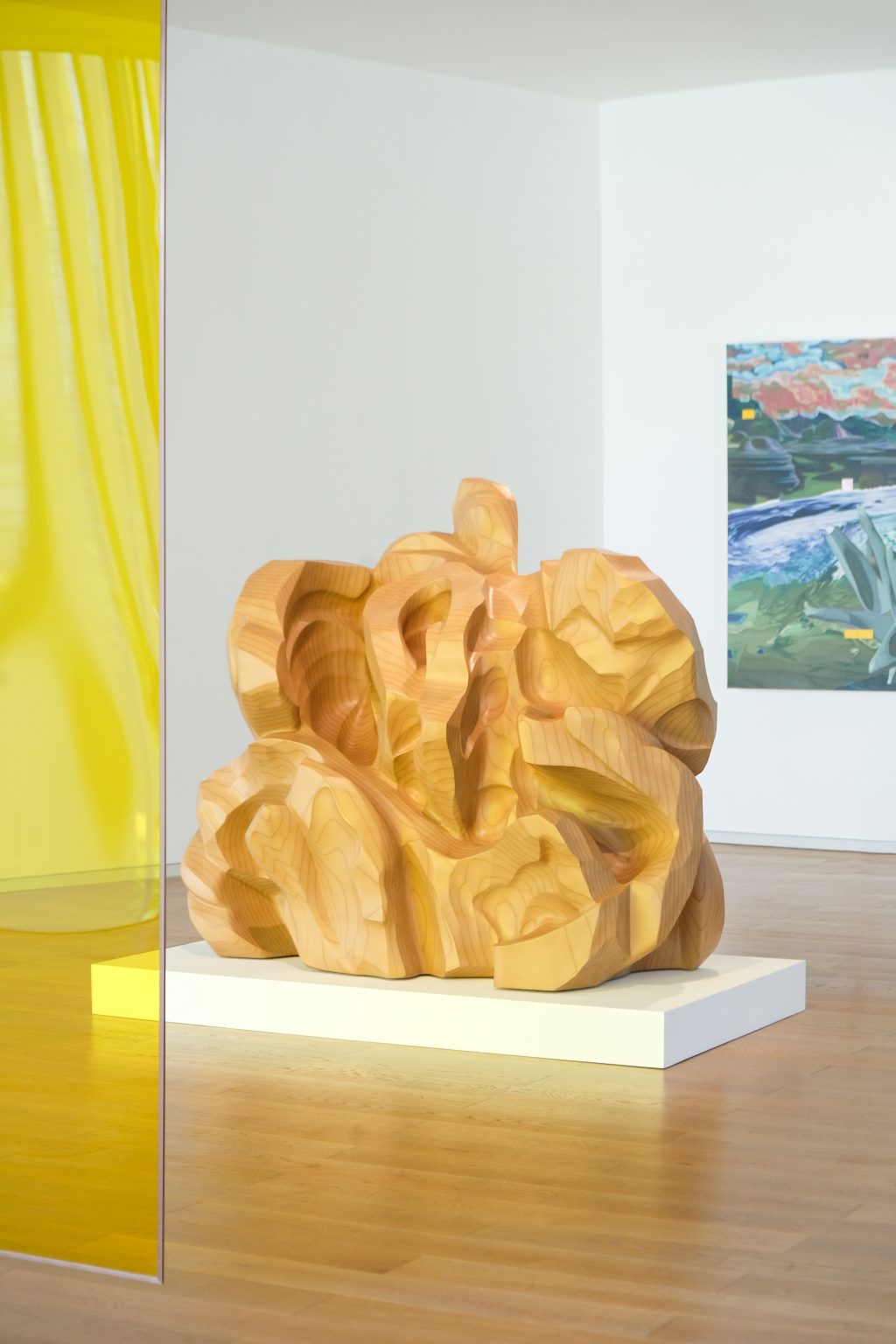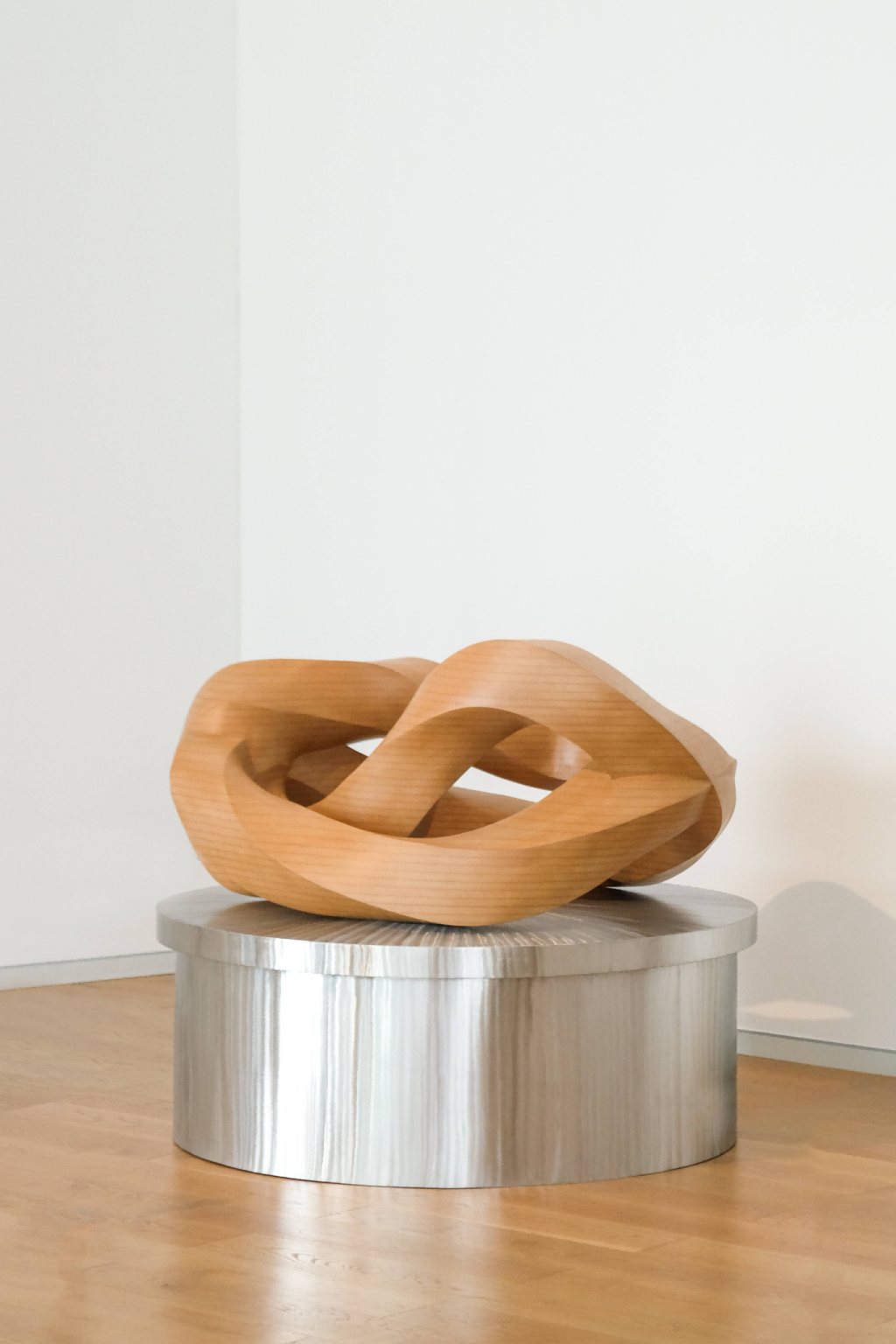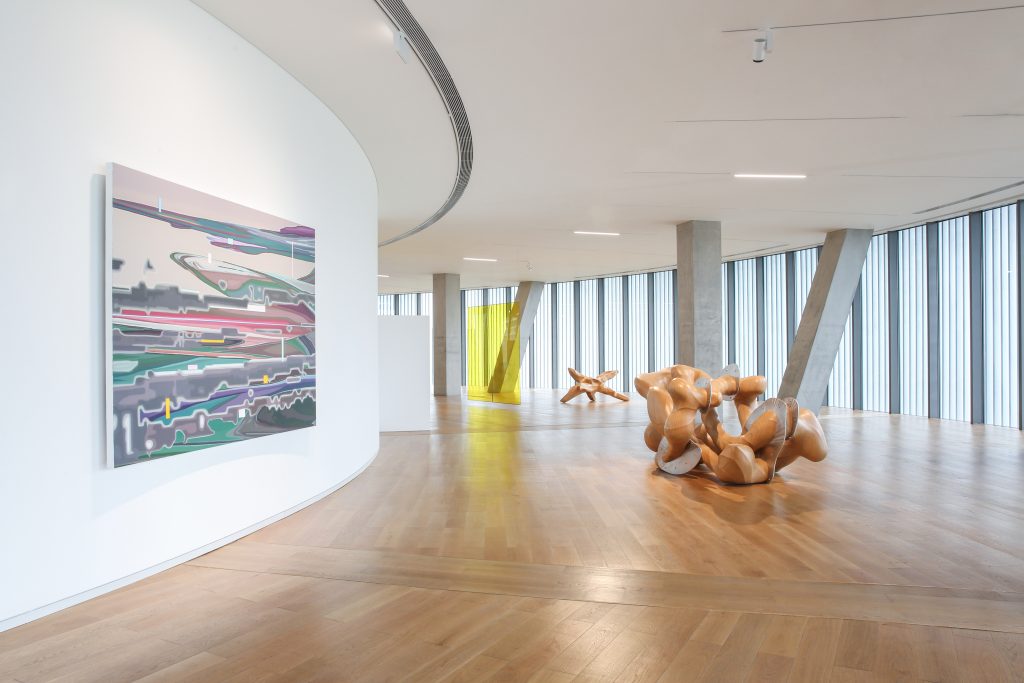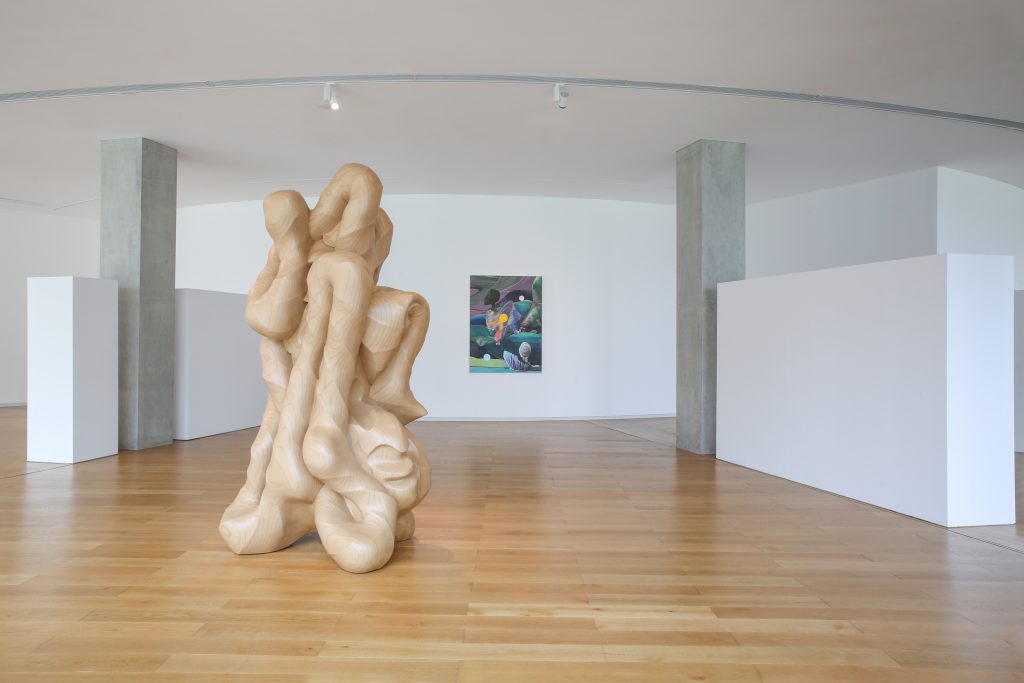- -+
WangJianwei
2023.11
In the era of “asymmetry,” we find ourselves caught in the gap between things and our knowledge of them. Despite this, no single method can fully encompass the entirety of things, as their openness stems from their inexhaustibility.
Starting with an initial concept and preparing to work does not mean creating art. You cannot simply think your way to declaring something as art, for you have not yet engaged with the actual object. Using a tool like a pen or knife involves technique but doesn’t grant complete knowledge of the object. Our work always exists in the interplay between part and whole, local and global. Fluctuation arises from the gaps between our
understanding and the objects, indicating that we are not rigidly fixed in one place but move between knowledge and objects. No knowledge, including science, can exhaust the properties of an object. An object always escapes from its relations, generating surplus and maintaining its openness, which manifests politically and ethically today. These gaps are not burdens but fundamental existences between us and objects, representing the “thing-in-itself.”
Therefore, I cannot definitively say that having a motive makes the outcome art simply because the motive is artistic.
Fluctuations
Fluctuation is a fundamental aspect of our current ecology, involving things that are not immediately apparent and the uncertainties between their formation, occurrence, and perception. In the studio, scattered items like a clamp, slate, wood shavings, or a drawing form complex fluctuations. A sculpture’s undulating surface provides information about its form, but not its entirety. Touching it reveals some properties, but it’s still incomplete. A photograph of a viewer in front of the sculpture makes the sculpture a mere background.
Everything we identify is a fluctuating set—a scooter, a can of paint, a piece of wood—none of which can be fully comprehended. For instance, an oriented strand board (OSB) looks hard, but this visual information does not capture its essence. When the OSB is glued together, it might resemble a rock with regular patterns, making one forget it’s OSB and instead focus on it as an art material. Any accidental break or excessive force reveals another property, like softness, showing that an object always presents more properties than we can grasp.
Often, the complexity of an object’s information can suggest a meaning, but this is just a gathering of information, not the object itself. The gap between objects and information creates asymmetric fluctuations. When we tire of constant knowledge and lose interest in others’ opinions, we turn to feelings, thinking they offer a direct connection. However, feelings are not a refuge and cannot protect us from the overwhelming information of today.
Many times, the information about an object is complex enough to suggest a meaning, but that is merely a collection of information, not the object itself. The oriented strand board has much such information, making me think that it is what it is. The method of finding the essence by sorting clues is outdated because of the asymmetry between things and information. This leads to gaps that produce asymmetric fluctuations.
When we become weary of constant knowledge, mock rationality, and lose interest in others’ opinions, we don’t want to understand things or actions too deeply. We turn to feelings, thinking they are important. It feels like wearing a glove and touching something to get the feeling. However, that feeling is not the object but a description of how we acquire it. Feelings are not a refuge, not even a temporary one, and cannot protect us from today’s information overload.
Gaps
No matter how detailed the data you use, you are still “viewing from afar.” This “viewing from afar” operates like a machine with standardized programs, allowing AI to quickly occupy space. Distant viewers believe they “see” things—a landscape or a sculpture—because these objects become determinate targets within this perspective, surrounded by interpretations. For instance, a sculpture is described as metallic, realistic, abstract, or deformed, and additional interpretations follow. These interpretations could apply elsewhere, indicating that “viewing from afar” is merely human manipulation of the external world, not the world itself.
However, if you try to get closer, you experience a sense of presence. For example, as you approach a sculpture, the initial holistic view from afar disappears (though some remnants persist in your cognition). You see shapes—pointed, curved—textures, and subtle light in crevices that “viewing from afar” couldn’t reveal. This closer inspection brings new awareness, challenging the initial holistic experience controlled by causality. If you use tools to interact with the material, you immerse yourself in the sculpture. The sculpture, as a whole, disappears, transforming into the texture of the wood or the tool’s path. A new geography emerges, revealing actions of multiple agents, different from the initial awareness. Reality opens up, yet it can be unsettling and induce anxiety because the familiar methods of understanding are inadequate.
This change in “distance” introduces psychological pressure and anxiety, even causing a loss of common understanding. The familiar methods of comprehending, recognizing, and explaining things become inadequate. Even if you gather some information (images, forms), they only reflect past experiences, providing your only hold. Continuing along this line, the tool reactivates, the body regains vigor, and the wood’s richness re-emerges. You and the materials are once again enveloped by things, but this does not constitute art.
Uncapturability
Interpretation goes beyond literal meaning. Whether you handle a piece of work, view an image, or read someone else’s text, you are engaging with the work in a way that involves using and manipulating it, but this doesn’t define the work itself.
When you start working hands-on, such as using a saw to cut wood, you move beyond mere interpretation. However, you wouldn’t immediately call the cut wood art; it’s part of a process. You might say, “I am making art,” guided by feelings and intuition. Practice is often mistakenly seen as natural and anti-theoretical, believed to provide a pure, natural presentation of things. This is just another way of interpreting things through your hands.Non-human elements are increasingly influencing what you see, working independently of your interpretations, leading to the illusion that only practice can access reality. This creates a false sense that you’re dealing with real things, much like discussing reality in a conference, where reality serves as a neutral container for discussions.
Therefore, practice alone doesn’t guarantee access to “reality.” Using art tools doesn’t automatically make something art. It’s a conventional connection among artist, material, and tool, and interpreting this connection as art means that art exists beyond this.
In today’s knowledge-driven era, you might feel compelled to handle issues in your own way, blending romantic and classical sentiments. Passion and self-feeling become shields against the non-human influences
When your subjective consciousness is less dominant, objects appear more equally around you, helping escape the rational confines.
The information you accept, reject, or embrace forms your ecological urgency. An artist often struggles to define their ecological context, oscillating between immediate knowledge and uncertainty. Misleading ideas like “artists don’t need to understand their work” maintain human control over art through self-guidance and bodily training, constantly battling with objects. Many outcomes result from chance, defying summary as fate or mystical experiences. Not everything needs to be understood, nor should ignorance be exploited.
The art ecosystem isn’t unique; it connects with all other life forms.
Causal
No one denies that during the creation of a work, regardless of its changes, it undergoes a similar process—from initial inspiration, selection of media, and craftsmanship, to becoming a final piece. However, considering causality, this process involves more than just creating a single artwork; it’s one among many possible outcomes.
In our interactions with objects, multiple causal relationships exist beyond art. What makes us confidently say, “this relationship is art,” and “that is just technique”? It’s challenging to accept that artistic causal relationships might not always exist between the artist and the object. So, have these additional causes disappeared or been deleted?
For example, materials are more open than art itself before they become art materials. This inherent openness is not just proven by their use in art; it’s an intrinsic attribute.
Despite our concept of the microscopic world, the invisible world is much larger and continually flows into our visible world, constantly evolving and interacting in ways that are difficult to observe from the outside, such as the density within materials. These materials perform their unique dramas in their density space, each “performance” being ontologically unique.
In my experiments with materials like OSB (Oriented Strand Board), they exhibit consistent basic properties while revealing additional qualities and temporal tensions, drawing me into a state of uncertainty. As I interact with them, I rely on past experiences to address current issues, seeking to name coincidences. However, these materials often act beyond my judgment, with numerous coincidences revealing the inadequacy of my experience, as they continuously change and relate to one another.
If we name the stages of a sculpture or painting process—sketching, making, forming—we impose a linear time structure, neglecting the part of objects that flows continuously from time, beyond our rough classifications meant to manage things.
Most changes in a work occur at unprepared moments, often leaving only consequences without traceable causes. Objects change upon contact with other objects, losing their original state and not reducible to mere coincidence. Each coincidence involves numerous elements, much like particle entanglement, never appearing the same way twice. The gravitational laws of the macroscopic world are limited and parallel to the microscopic world.
Symbiosis
Symbiosis, where parasite and host become one, offers profound insights. In symbiosis, parts of each organism disappear, leaving behind some DNA to distinguish them from others. This concept applies to the entanglement of materials, tools, and machines in art, where it’s hard to identify the exact contributions of each collaborator. Art retains this ancient and primal gene, which cannot be taken away by knowledge or instruments. Biologist Lynn Margulis, quoting David Smith, compares the products of biological symbiosis to the smile of the “Cheshire Cat”—a fictional creature whose smile lingers even as the body fades.
Symbiotic entities arise from co-evolution, much like the cooperation between materials and tools or tools and their users. It’s challenging to say whether new tools emerge from new materials or vice versa. Both continuously adjust their positions and functions, collaborating in a manner that exceeds the sum of their parts, an emergent phenomenon. For example, a metal hammer might “lose” its original function with concrete and instead work with OSB, leading to new forms as OSB shifts from home fixtures to artistic sculptures. This evolution through the loss of past functions destabilizes our perception of objects. As yesterday’s forms fade, we face the fragments and reconstruct new aesthetic experiences, beyond merely knowledge and its derivatives.
We tend to think of art as a singular causal outcome, but more causality occurs in the process. We selectively overlook some aspects, thinking they are not art, while others recede into the background. Learning to uncover these hidden aspects is essential.
Before symbiosis, objects exist independently—minerals, organic matter, and the color red are entities in themselves, gaining significance when used in art. Viewing randomness as divine overlooks the conditions, environment, and labor required for such randomness.
Consider a sculpture closely. Its name implies preexistence in the artist’s imagination and labor, suggesting identity defines art rather than pure artistic labor—a romanticized view ignoring the symbiotic process in art, essentially a struggle. In this ecosystem, familiar structures vanish, and heterogeneous objects grow aggressively. Is this collective attack, defense, or resistance? Perhaps it’s in their entanglement that greater forms emerge, with previously distinct entities growing new branches.
In this new ecosystem, I, materials, tools, electricity, and temperature no longer merely support each other’s growth but form an environment for new species. Symbiosis is prevalent, drawing energy from surroundings, controlled by me. Materials reveal themselves through tools, and tools prove their worth through materials. These dynamic, unfamiliar entities, or those not yet fully realized, clash, float, and navigate through the new ecosystem. Indigenous organisms must adapt to these non-traditional, evolving objects, all within the fluctuations of symbiotic evolution and time.
Related Artworks
Variations No.15
Oil on canvas
180×135cm
Variations No.2
Mixed media-Stainless steel,wood, fluorocarbon paint
240L×230W×160H
Variations No.13
Oil on canvas
250×187cm
Variations No.11
Oil on canvas
250×173cm
Variations No.4
Mixed media-wood, fluorocarbon paint
155L×150W×85H
Variations No.1
Mixed media-wood, fluorocarbon paint
105L×105W×240H
Variations No.9
Mixed media-Stainless steel,wood, fluorocarbon paint
120L×120W×100H
